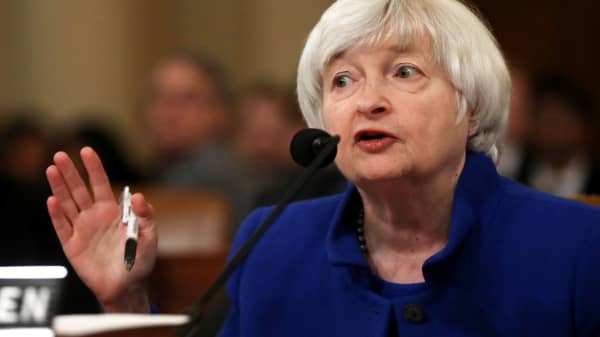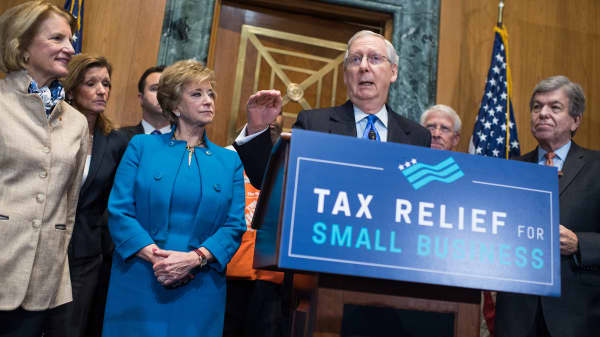With a tax reform victory within reach, President Donald Trump on Wednesday was feeling even more optimistic about the outlook for U.S. economic growth.
Wildly optimistic, in fact, based on historical data.
At a Cabinet meeting Wednesday, Trump told reporters he's holding out for the prospect of U.S. gross domestic product more than doubling to a 6 percent annual growth rate.
That would be more than twice the 30-year average pace of 2.5 percent, and more than triple the Congressional Budget Office forecast for the next decade.
The last time the U.S. economy hit a 6 percent annual growth rate was in 1984 — and it only did so briefly. The surge accompanied an historic reversal of double-digit interest rates put in place by the Federal Reserve to tamp down the runaway inflation of the 1970s. Baby boomers, who are now leaving the work force as they retire, were in their prime working ages. The national debt was a tenth its current level.





